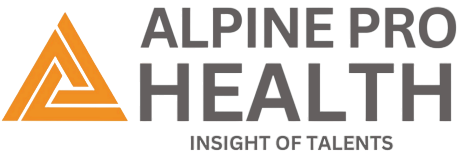In today’s evolving healthcare landscape, accurate and detailed clinical documentation is more critical than ever. Among all aspects of documentation, Medical Decision Making (MDM) plays a pivotal role in defining the complexity of care provided, supporting appropriate billing, ensuring compliance, and ultimately impacting both revenue and patient outcomes.
MDM is not just a box to check, it is the heart of the clinical encounter. When properly documented, it provides insight into a provider’s thought process, clinical judgment, and the steps taken to diagnose and manage a patient’s condition. This article delves into why documenting MDM is essential and how it connects the dots between coding, reimbursement, and patient care.
Understanding Medical Decision Making
Medical Decision Making refers to the complexity of establishing a diagnosis and selecting a management option. It includes three primary elements:
- The number and complexity of problems addressed
- The amount and/or complexity of data reviewed and analyzed
- The risk of complications, morbidity, or mortality associated with patient management
These elements form the backbone of determining the level of service for Evaluation and Management coding. The more complex the MDM, the higher the level of service and consequently, the higher the potential reimbursement, assuming the documentation supports it.
Why Accurate MDM Documentation Matters?
1. Ensures Proper Reimbursement
The financial health of healthcare organizations depends heavily on accurate coding, which is only as reliable as the provider’s documentation. As a result, if MDM is under-documented, the medical coder may be unable to assign a code that accurately reflects the level of care provided.
For example, a provider might handle a high-complexity case involving multiple chronic conditions, extensive data review, and high-risk treatment decisions. But if the MDM isn’t well documented, the encounter could be downcoded, resulting in a revenue shortfall.
MDM drives E/M code selection, especially after the 2021 updates to outpatient and office visit guidelines, where time and MDM became the primary determinants. Therefore, complete and accurate MDM documentation is directly tied to fair and just reimbursement.
2. Reduces Risk of Audit and Denials
Payers and auditors routinely review provider documentation to ensure that billed services are medically necessary and correctly coded. Insufficient MDM can trigger red flags, audits, and, worse, denials or recoupments.
Detailed MDM notes demonstrate that a provider applied clinical judgment in evaluating and managing the patient’s condition. This level of transparency safeguards providers during audits and helps defend the medical necessity of services rendered.
Additionally, documentation that shows critical thinking, complexity, and rationale behind decisions adds a layer of protection in legal and compliance scenarios.
3. Supports Continuity of Care
While revenue and compliance are significant, MDM’s value extends deeply into patient care and safety. Documenting a provider’s decision-making process helps other care team members understand the reasoning behind a diagnosis or a treatment plan.
For example, imagine a patient admitted to the emergency department with chest pain. When the attending physician documents detailed MDM including evaluation steps, test rationale, and reasons for ruling out certain conditions it supports seamless care during transfers or follow-up visits with other providers. Conversely, without this documentation, essential context may be lost, potentially compromising patient outcomes.
In this way, comprehensive MDM documentation enhances communication and collaboration among multidisciplinary teams, thereby improving the overall quality of care.
4. Highlights Clinical Complexity and Provider Value
Today, providers are under increasing pressure to demonstrate value whether for quality reporting, pay-for-performance programs, or simply to reflect the true nature of their work. Documenting MDM helps illustrate the complexity and intensity of medical care provided.
For instance, managing a diabetic patient with coexisting hypertension, chronic kidney disease, and non-compliance presents a highly complex situation. By documenting the MDM thoroughly including all contributing factors, patient risks, and treatment rationale the provider underscores their expertise, time investment, and clinical responsibility.
MDM documentation showcases the thought process that can’t be captured by diagnoses or procedures alone.
5. Improves Risk Adjustment and Population Health Management
Risk-adjusted payment models, such as Hierarchical Condition Categories (HCC), depend on accurate capture of chronic conditions and disease severity. The MDM section often provides the narrative necessary to validate these conditions and support their ongoing management.
Without proper Medical Decision Making documentation, important comorbidities may not be captured in coding, which skews risk profiles and leads to underpayment for high-risk populations.
In value-based care models, documenting MDM is vital for identifying care gaps, planning interventions, and delivering patient-centered care.
Best Practices for Effective MDM Documentation
To maximize the benefits of MDM, providers should adhere to a few best practices:
- Be specific: Avoid generic statements like discussed treatment options. Instead, detail what was considered, what was chosen, and why.
- Capture complexity: Mention comorbidities, social determinants, and patient behaviors that influence decision-making.
- Document data reviewed: Include lab tests, imaging, prior records, or consults considered during the visit.
- Describe risks: Clearly articulate the risks discussed with the patient and the rationale behind high-stakes decisions.
- Reflect thought process: Let your notes show how you arrived at the diagnosis or management plan.
Remember, if it’s not documented, it didn’t happen from a coding and billing perspective.
Final Thoughts
Medical Decision-Making documentation is far more than a routine task; it is a powerful tool that bridges clinical expertise, operational efficiency, and patient well-being. By embracing meticulous Medical Decision Making documentation practices, Healthcare Providers can enhance coding accuracy, optimize revenue, and elevate the quality of care delivered to patients.
The path to achieving these benefits lies in recognizing the integral role of documentation and committing to continuous improvement. In doing so, healthcare organizations can not only meet today’s challenges but also pave the way for a more efficient and patient-centered future.


